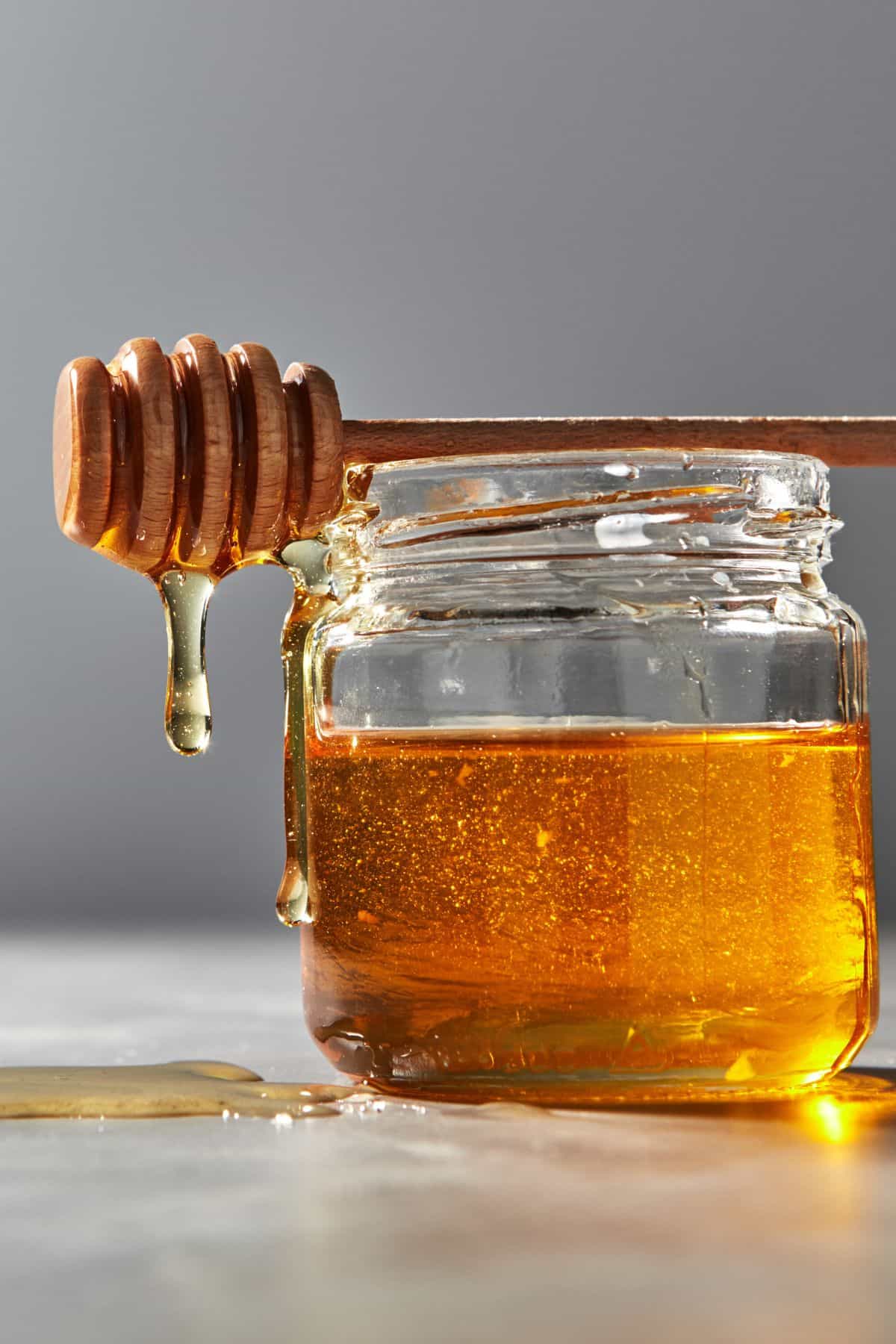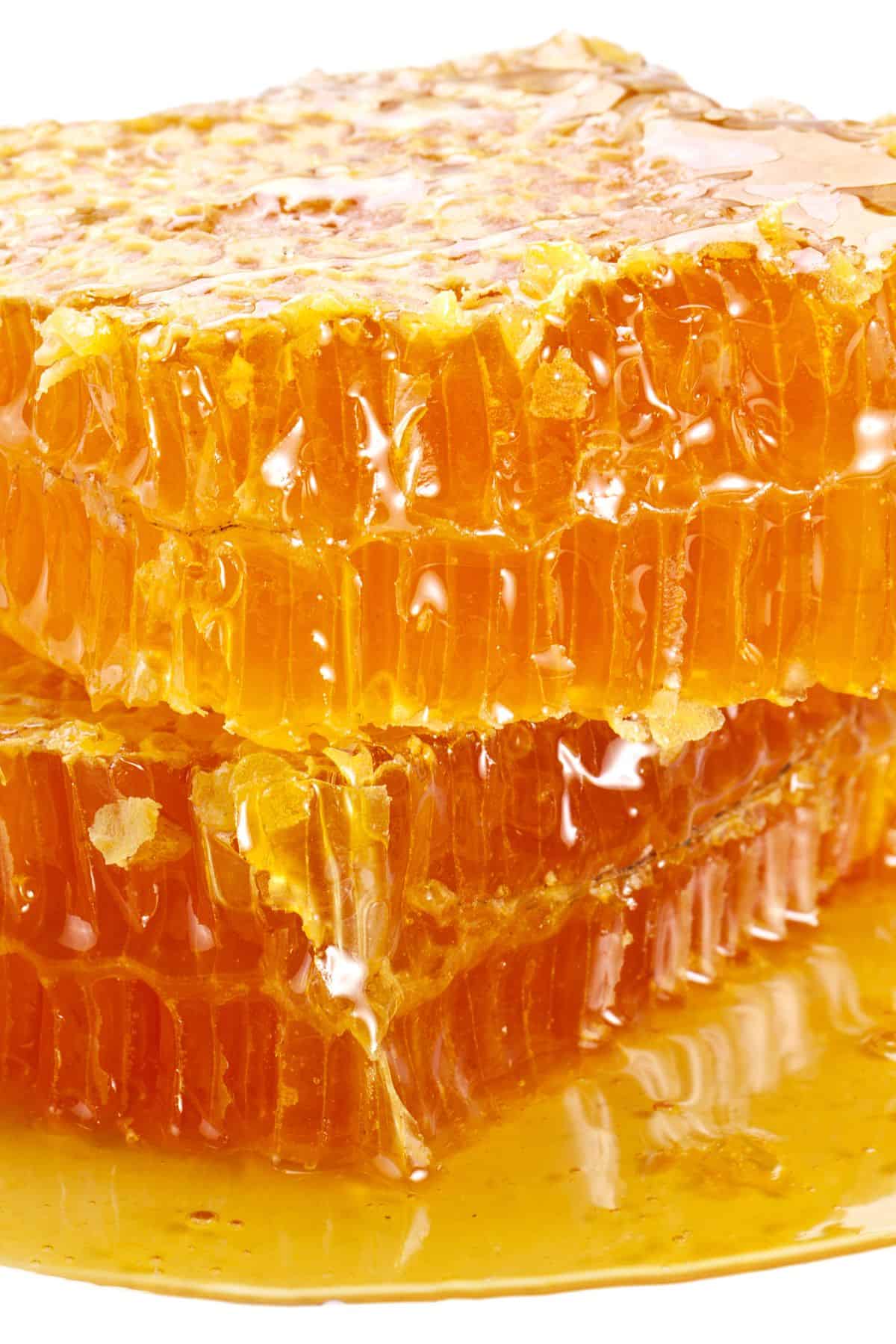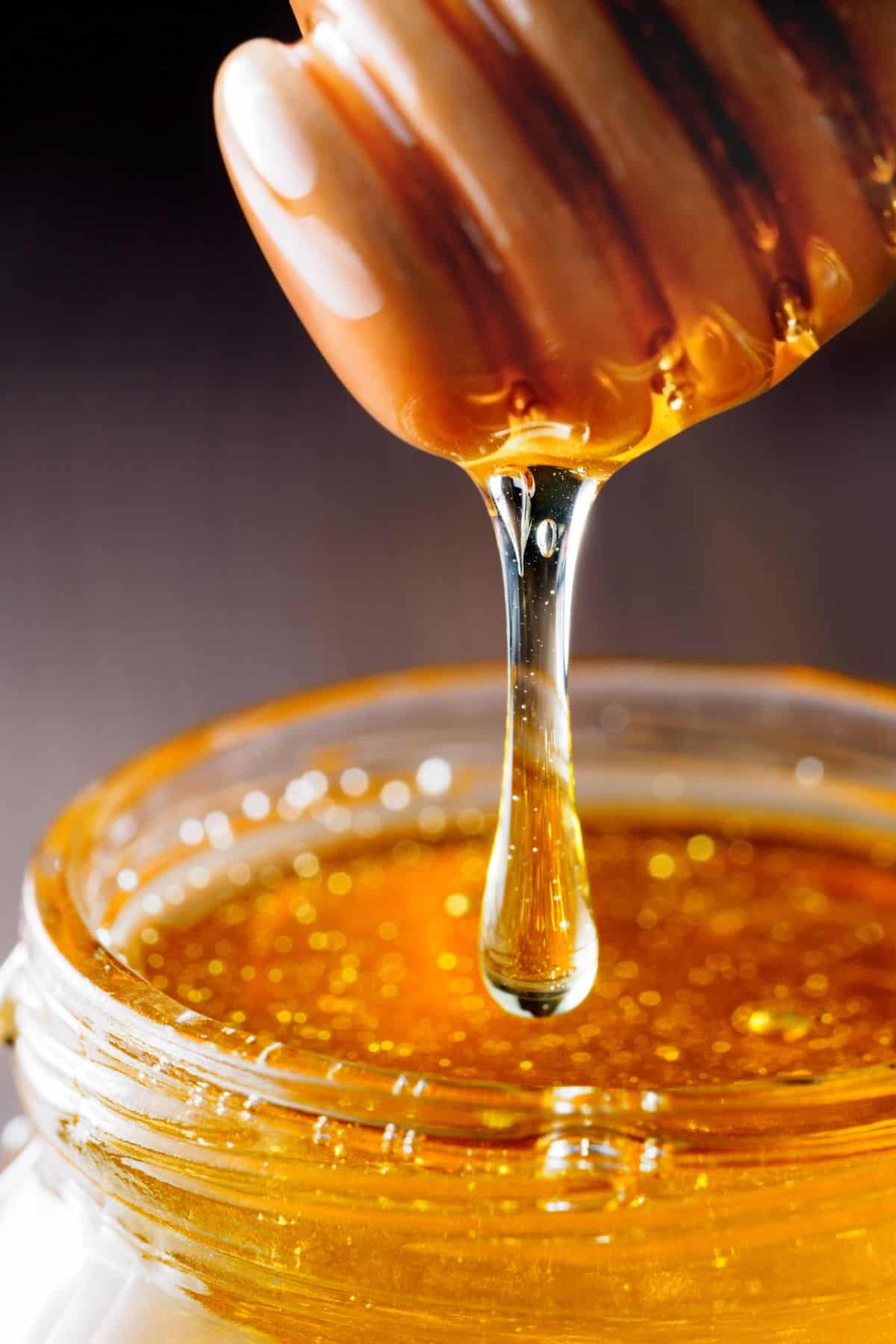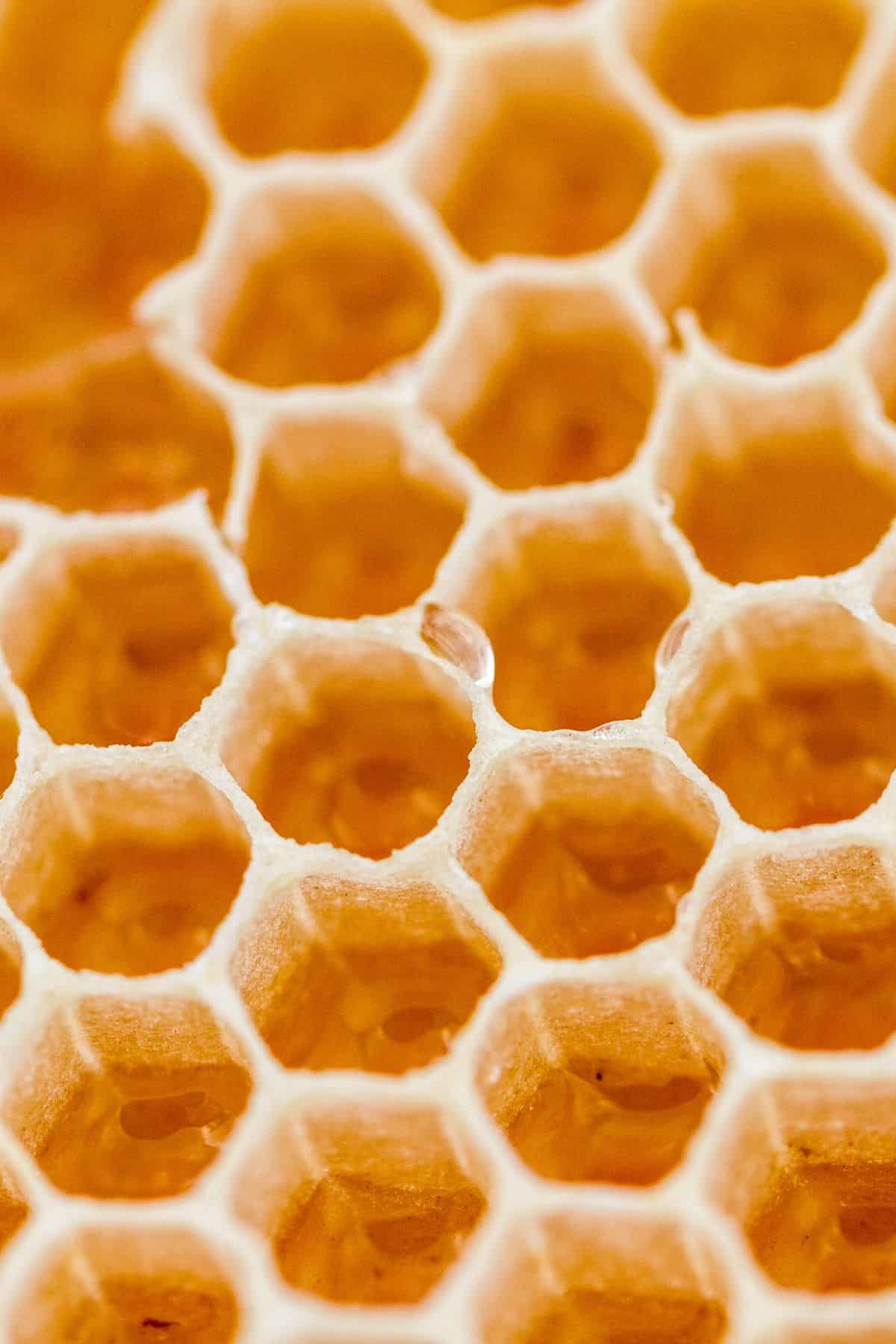What Goes With Honey?
Wondering what goes with honey? Learn the best ingredient pairings, meal ideas, popular flavor combinations, and other helpful tips.

Knowing what goes well with honey gives you a starting point for putting meals together using the ingredients you already have on hand.
Whether you want to reduce food waste, get more creative in the kitchen, or improve your cooking skills, it starts with understanding what flavors pair well together.
What Is Honey?
Honey is a naturally occurring sweet, viscous substance made by thousands of female honeybees.
The honeybees collect pollen and nectar from the flowering plants that they pollinate and transport it back to the hive for worker bees to process. Eventually, with the help of enzymes provided by the worker bees, the nectar ripens into honey and can be harvested for consumption. source
Honey Varieties
The taste of honey varies depending on what and where bees pollinate. Here are a few popular varieties:
- Acacia: very sweet with a classic honey flavor.
- Clover: light, sweet, floral.
- Buckwheat: earthy and nutty with a molasses-like flavor.
- Alfalfa: mild, less sweet.
- Orange blossom: mild and floral with a citrus scent (many on the market are artificially flavored so look for raw and unfiltered local honey).
- Tupelo: a rich buttery honey with a pear-like aroma and floral notes.
- Manuka honey: produced in New Zealand and Australia by bees that pollinate the native Manuka bush. It has a sweet flavor that’s mildly nutty and has greater amounts of antibacterial properties than most other types of honey.
Where To Buy
Buy honey that is local to where you live or as close to your region as possible. This means it will have the best flavor and will provide the most healing benefits of the honey.
You can find local honey at farmer’s markets and even at major grocery stores, by looking for the local label. The best way to know for sure is to read the back of the jar to make sure it’s actually local and not mass-produced.

What To Look For
Even though most honey jars only list honey on the ingredient list, it doesn’t really explain what you’re getting. Here are a few additional words to look for:
- Raw – this means the honey has either come straight from the honeycomb or has been minimally heated. It can look cloudy, which means it still has many of the good enzymes. It’s great for spreading on toast with peanut butter, drizzling over fresh berries or grilled fruit, or added to homemade vinaigrette dressings.
- Unfiltered – less processed than filtered honey and contains more pollen and wax particles giving it a somewhat cloudy appearance.
What to Avoid
Organic doesn’t always mean better, and this especially is true when it comes to honey. Just because it’s organic doesn’t mean it’s raw or minimally processed. It’s also difficult to regulate since bees need access to large areas of land that haven’t been treated with pesticides.
Most organic honey is imported from Brazil or Mexico, which means it gets pasteurized (heated) so it’s shelf-stable, killing many of the good-for-you enzymes.
You also want to avoid imitation honey, which is essentially made up of a combination of fake sweeteners.
How To Store

Always keep your honey stored in an airtight glass container in a cool dark cabinet. Keep it free of moisture and it’ll never spoil. Its flavor is best when eaten within 2 years.
Because honey is essentially just sugar and water, it can start to crystalize over time. If this happens, run the jar under warm water until it reliquifies again.
What Goes Well With Honey?
Vegetables
Carrots, ginger, pumpkin, rhubarb, and sweet potatoes.
Fruit
Apples, apricots, bananas, coconut, figs, grapefruit, grapes, guava, kiwi fruit, kumquats, lemon, lime, lychees, melon, orange, papaya, peaches, pears, persimmons, pineapple, plums, pomegranate, quince, and raspberries.
Spices
Cinnamon, nutmeg, and red pepper flakes.
Herbs
Lavender, mint, sage, and thyme.
Nuts & Seeds
Almonds, chestnuts, hazelnuts, peanuts, pecans, pine nuts, pistachios, and walnuts.
Non-Dairy/Dairy
Unsalted butter: or vegan butter, buttermilk: or dairy-free milk with a splash of vinegar or lemon juice, ricotta cheese: or dairy-free cashew ricotta or almond ricotta, heavy cream: or cashew cream or coconut cream from a can, ice cream: or dairy-free ice cream, and yogurt: or any dairy-free yogurt.
Proteins
Chicken, duck, ham, lamb, and pork.
Pantry Items
Brandy, dark and white chocolate, coffee, cognac, dates, dried figs, orange liqueur, mustard, oats, prunes, raisins, rum, soy sauce, brown and white sugar, tea, tequila, vanilla, whiskey, red and white wine.
Popular Honey Pairings
- almonds + chicken + pomegranate
- bananas + lavender + pork
- cream + pistachios
- fruit + yogurt

What To Make With Honey
Honey is a popular ingredient in Greek, Middle Eastern, Moroccan, Turkish, Chinese, and Southern cuisines.
Not only is it a natural sweetener for baked goods and pastries, but it’s also used to flavor (and add moisture) to breads and biscuits.
It’s commonly used to add balance to savory dishes such as honey garlic lemon pepper chicken thighs, shrimp poke bowls, pecan crusted salmon,
It’s also often used in savory sauces such as carrot ginger miso dressing, spicy honey mustard, homemade vinaigrette dressings for both salads and roasted vegetables such as roasted asparagus and brussels sprouts or honey roasted parsnips and carrots, and Italian artichoke salad.
Use it to naturally sweeten desserts or fruit spreads such as cherry compote or apricot butter. Use in frozen yogurt granola bars or drizzle over grilled or fresh fruit with yogurt.
To grab more inspiration, look in your fridge and see what ingredients you have from the above list.

